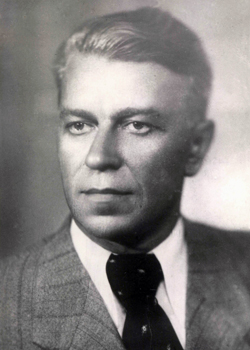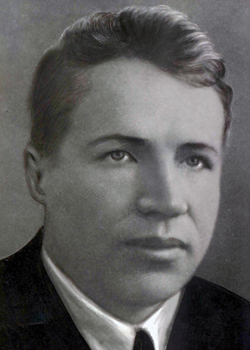On the eve of 9 May, we keep publishing materials about how the Leningrad Institute of Civil Engineering (now St Petersburg State University of Architecture and Civil Engineering), together with the whole country, brought the Great Victory closer.
During the war, 950 students, teachers, graduate students, workers, employees, as well as architects and engineers who had defended graduation projects in June 1941, served in the ranks of the army and navy, in hospitals, in the troops and units of the NKVD of the USSR. Other members of the university staff worked in besieged Leningrad, worked on construction sites in the Urals and Siberia, helped industry and the Red Army with their scientific developments.
From the first months of the war, the teachers of the institute and its laboratories scientists worked for the needs of defense: researchers completed 24 topics of a military-defensive nature, a number of factory orders, working drawings for the manufacture of mass military products.
Our specialists examined buildings damaged by bombs and shells. Together with architects, they solved the tasks of masking military and other objects of Leningrad, sheltering historical and architectural monuments.
In the mechanical laboratory, under the guidance of Professor Nikolay Aistov and teachers of the Departments of Strength of Materials and Theoretical Mechanics, mass tests of gun steel were carried out. The Chemistry Laboratory took part in the production of anti-tank bottles with self-igniting liquids.
In the most terrible time of the blockade, on 8 January, 1942, graduation projects were defended at LISI. The projects were defended by several students of the sanitary-technical faculty.
Most of the fifth-year students who have completed their studies graduated without defending their diploma projects and in early February 1942 were evacuated to Chelyabinsk at the disposal of the People's Commissariat of Construction of the USSR. On 15 March, students of other courses, teachers, employees and their families left for the “mainland”. The institute was transferred to Essentuki. The team was waiting for new challenges.
A small group (about 15 people) of employees and workers of the household unit remained in Leningrad, who were entrusted with preserving the institute, its property and libraries. The courageous work of these women under the leadership of Konstantin Sergeev, Deputy Director of the LISI for economic work, became a bright page in the activities of the Institute during the Great Patriotic War.
In the winter of 1943, in the capital of the Altai Territory, Barnaul, by order of the People's Commissariat of Construction of the USSR, a small team of teachers and students of LISI was assembled, which was headed by the director of the institute, Grigory Chukhmanov. In May, teachers and students from the North Caucasus liberated by the Red Army arrived in Barnaul. Admission to the first course (over 80 people) took place. In the summer, 16 students of the Faculty of Civil Engineering, having defended their graduation projects, went to Stalingrad to restore the hero city. The first front-line soldiers, dismissed from the active army due to injury, returned to the Institute.
During the war, the Altai Territory became the most important granary of our Motherland. During the harvesting period in 1943 and the sowing season in 1944, students of all courses provided great assistance to the Altai collective farms and state farms. Many of them combined their studies with work in construction and industry, helping the heroic home front workers. The scientists of the institute contributed to the work of construction organizations in Barnaul by holding numerous consultations and expertise.
In October 1943, LISI was one of the first among the Leningrad universities to resume its usual activities, although the enemy was still standing under the walls of the city. Many professors and teachers who had worked here all the days of the siege returned to the Institute. Tempered by adversity and deprivation, 220 students studied and worked, half of whom were children of the blockade, who were studying at school by the beginning of the war. These young men and women did a great job of restoring the buildings and dormitories of the Institute, and prepared it for the arrival in August 1944 of the main part of the Barnaul branch (250 people).
Already in 1944, the first defenses of diploma projects took place, and by the beginning of the new 1944-1945 academic year, the total number of students exceeded 800 people.
On Victory Day, 9 May, 1945, a mass meeting was held at the Institute. Everyone understood that a lot of work awaited the builders, that years of hard work laid ahead.
Based on the materials of the book "Leningrad Civil Engineering Institute of Order of the Red Banner of Labor" (Leningrad: Stroyizdat, 1982).
Other materials of the "Scientific Regiment" project:
Our Graduate Built the Road of Life
Front Line of the Architect Aleksandr Nikolsky
Researcher who Developed Science in Besieged Leningrad
Fights of Student Klinov
Engineer of the 3rd Belorussian Front
Nineteen-Year-Old Gunner Stormed Berlin
Path of a Volunteer: from Front-Line Roads to Space Development
Ivan Solomakhin: "The Most Memorable Battle was for this Devil's Hill!"
Fiery Dnieper of the Hero of the Soviet Union Aleksandr Prygunov



